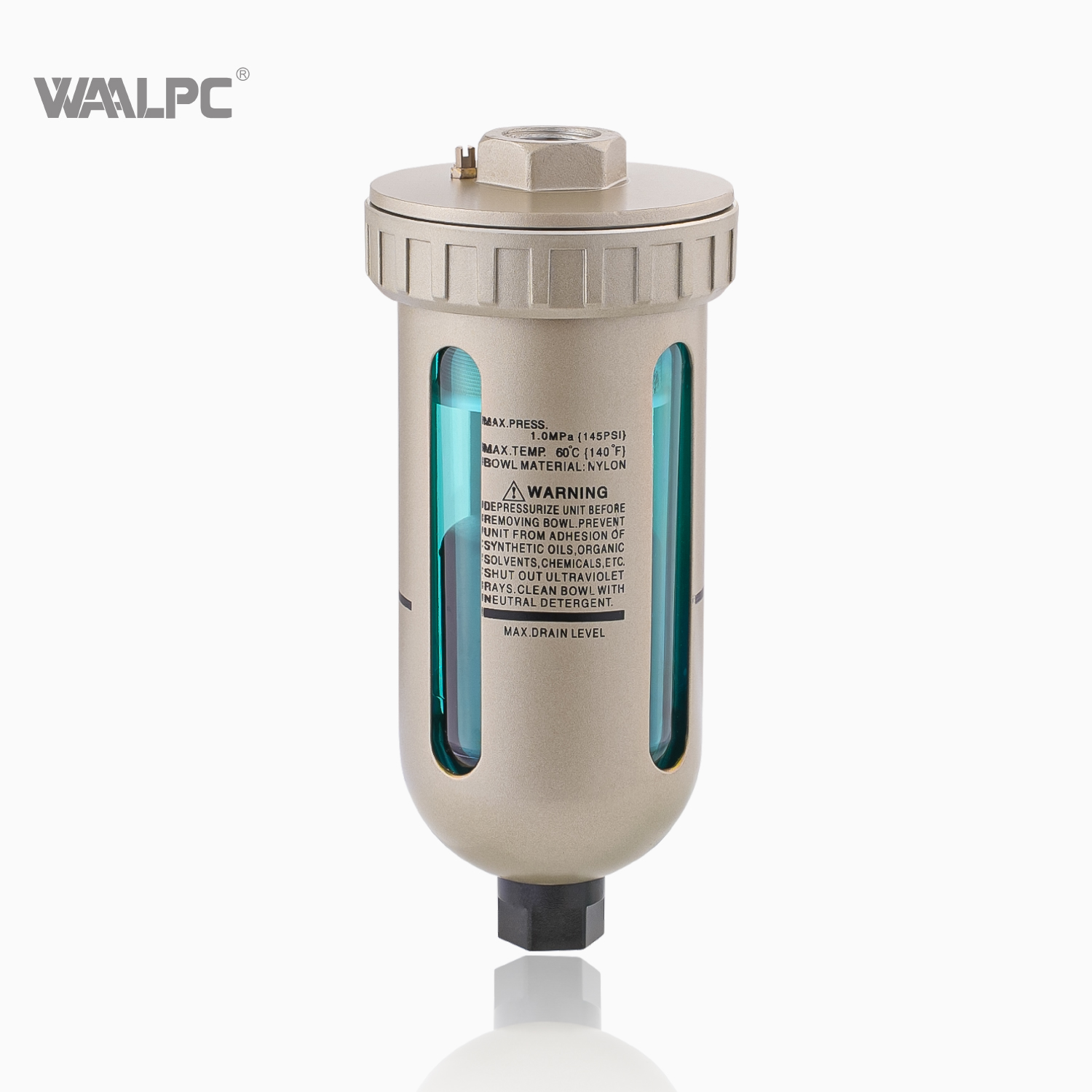Views: 0 Author: Site Editor Publish Time: 2025-06-24 Origin: Site
Pneumatic systems, powered by compressed air, are the workhorses of countless industries – manufacturing, automation, packaging, food processing, and beyond. Yet, the compressed air coursing through these systems is rarely pure. It carries inherent threats: atmospheric dust, pipe scale, rust, condensed water, and compressor lubricant. This is where the filter, a critical component within the Filter-Regulator-Lubricator (FRL) unit or used standalone, steps into the spotlight as an indispensable guardian. Its practical application is fundamental to system reliability, efficiency, and longevity.
The filter's primary job is simple in concept but vital in execution: remove harmful contaminants from the compressed air stream. Here's how this translates into real-world operation:
Application: Protecting sensitive components downstream like precision valves, cylinders, air bearings, and pneumatic tools.
How it Works: As compressed air enters the filter housing, it is forced into a swirling vortex (centrifugal action). Heavier particles and bulk liquids are flung outward by centrifugal force, hitting the bowl wall, and draining down into the collection bowl. The air then passes through a filter element (typically sintered bronze, plastic, or cellulose fibers) that traps finer solid particles (e.g., dust, rust, pipe scale) based on its micron rating (e.g., 5 µm, 40 µm).

Real-World Impact: Prevents scoring of cylinder walls, sticking valves, clogged nozzles, and premature wear in tools, significantly reducing downtime and maintenance costs. In applications like painting or powder coating, particle filtration is essential to avoid defects on the finished product.
Application: Critical in environments where moisture causes corrosion, freezing (in cold climates), bacterial growth (food/pharma), or process interference (e.g., instrument air, drying processes).
How it Works: While basic filters remove bulk water via centrifugal action, specialized coalescing filters tackle fine aerosols and mist. Air flows through a fine-fiber media. Tiny water droplets impact the fibers, coalesce (merge) into larger droplets, become too heavy to remain airborne, drain down the bowl wall, and collect for manual or automatic drainage.

Real-World Impact: Prevents rust inside pipes and components, ensures consistent operation of instruments sensitive to moisture (e.g., flow meters, pressure sensors), prevents ice blockages in cold weather, maintains product quality in food packaging, and reduces the risk of microbial contamination.
Application: Essential where oil contamination is unacceptable: food and beverage processing, pharmaceutical manufacturing, cleanroom environments, certain chemical processes, and applications using oil-free compressors.
How it Works: Similar to water removal, coalescing filters capture fine oil aerosols and vapor (often from compressor lubricant or carry-over). The filter media causes oil droplets to coalesce and drain. Activated carbon elements can be added for vapor removal where necessary.
Real-World Impact: Prevents product spoilage or contamination in sensitive industries, avoids gumming up of valves and seals not designed for lubrication, ensures compliance with hygiene standards (e.g., FDA, ISO 8573 air purity classes), and protects processes where oil interferes with chemical reactions or adhesion.
Placement: Filters are typically installed immediately downstream of the compressor/receiver (main line filter) and/or at the point-of-use (sub-line filter) just before critical components. Point-of-use filtration provides the highest level of protection for sensitive equipment.
Sizing: Correctly sizing the filter (flow capacity) is crucial. Undersized filters create excessive pressure drop, starving downstream equipment. Oversized filters are unnecessarily costly. Matching the filter's Cv (flow coefficient) or SCFM rating to the system's demand is key.
Micron Rating Selection: Choosing the right filtration level (e.g., 40 µm for general protection, 5 µm or 1 µm for instruments, 0.01 µm for sterile air) depends on the sensitivity of downstream components and process requirements. Finer filtration usually means higher pressure drop and more frequent maintenance.
Maintenance: Filters are not "fit and forget." The collection bowl must be drained regularly (manually or via auto-drain) to prevent liquid re-entrainment into the air stream. The filter element clogs over time and must be replaced according to the manufacturer's schedule or when pressure drop increases significantly. Neglecting maintenance renders the filter useless.
Drain Options: Manual drains are simple but require operator attention. Timed or electronic auto-drains automate the process, improving reliability but adding cost and complexity.
The pneumatic filter is far more than just another component; it's a proactive defense strategy. By systematically removing contaminants – particles, water, and oil – filters directly contribute to:
Increased Equipment Lifespan: Reducing wear on cylinders, valves, and tools.
Enhanced System Reliability: Minimizing unplanned downtime due to component failure.
Improved Product Quality: Preventing defects caused by air contamination.
Reduced Operating Costs: Lowering maintenance expenses and energy costs (by maintaining efficient operation).
Process Consistency: Ensuring stable air quality for critical applications.
Compliance: Meeting industry standards for air purity.
In the practical world of pneumatics, investing in the right filter, correctly installed and diligently maintained, is not an expense but a fundamental requirement for smooth, efficient, and trouble-free operation. It safeguards the integrity of the air that powers the system, ultimately protecting the productivity and profitability of the entire operation. The humble filter truly is the unsung guardian of pneumatic performance.